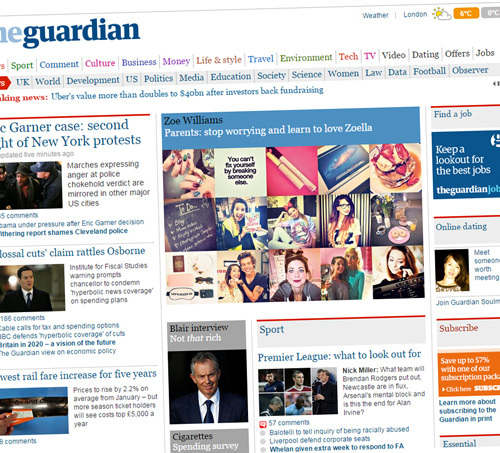“We are not trying to be a newspaper, we are not trying to produce TV journalism. We are 100% focused on digital,” Henry Blodget, chief executive of Business Insider told the Guardian earlier this month.
The occasion was the launch of the UK version of the successful US news site. And although, on the one hand, Blodget suggested that Business Insider would complement existing online news outlets, his words suggested his intentions were more disruptive. “Our model is better serving digital readers… it is not the thrust….for a lot of traditional publishers – digital is a secondary concern. We are reaching a new generation of readers,” he added, in case anyone was in any doubt.
And of course, he has a point. Until now, “born digital” publications have veered towards the idiosyncratic – take the Huffington Post and BuzzFeed. It may be less formal or authoritative than the FT, but Business Insider is a straight down the line competitor. It also has the advantage in that, behind the web pages, it has no legacy organisational or technological infrastructure to weigh it down. Presumably, it can be fast and agile, not just in reporting the news, but also in finding new ways to monetise its existence.
To be fair, some of the top UK news channels – the FT, BBC, the Guardian and the Times, for example, have already successfully re-invented themselves to meet the challenges of digital and will be a match for any newcomers. But many other publications and broadcasters have not yet got it right.
As they lose more revenue, budgets become tighter and the board becomes more risk-averse. This is understandable; producing print and online issues concurrently takes time, hard work and juggling skill. On the whole, morale is low and although these organisations do recognise that digital is the future, print advertising is probably still their main source of income, even though it is diminishing.
It might seem like a fight between front pages, but the real battle is behind the scenes in the back office. Often large, unwieldy technology stacks aren’t agile enough for today’s demands. Any changes mean manual and extensive workarounds; front offices are dislocated from back offices and few CRM systems cover the entire organisation so there’s no single view of an individual reader’s behaviour across print, digital and social media.
This matters as it means they are unable to deliver the highly-personalised content expected today; B2B or B2C are descriptions of the past – the ultimate goal today is H2H or human to human.
Hopefully publishers who need to rebuild for digital will respond to this fighting talk. Yet, there is some cause for hope. In a recent survey carried out by CloudSense, 88% of the UK respondents currently don’t pay for digital media sites and apps, even though 45% had accessed online content that day. This means sites such as Business Insider are reliant on online advertising.
In comparison, over half (54%) had paid for printed media over the past month. This highlights how consumers attach different values to these two delivery methods. So all is not lost for traditional publishers. They do have an established brand, plus an alternative source of revenue, even if it is getting ever more difficult to acquire.
If this doesn’t happen quickly, readers will go elsewhere to those who have already made the shift to digital.
But they need to build on this brand as a matter of urgency. If they can smooth the transition to digital with cross media products rather than continuing to promote siloed sales, they can quickly gain ground.
Legacy infrastructure can be transformed by a new, cloud technology layer on top of existing systems. This will provide the flexibility to make fast changes which then flow seamlessly into existing workflow and processes. Every organisation in this situation needs to be able to experiment with ideas and test the market. This cloud-based technology will enable this fast iteration – giving them the scope to try, fail and if necessary quickly try again until they succeed.
If this doesn’t happen quickly, readers will go elsewhere to those who have already made the shift to digital. But it’s more than a case of changing the front page, tweaking other content or the deals offered.
It will take a radical re-build of infrastructure – but the flexibility gained will enable publishers to compete with any young hopeful invading its space, now and in the future.






